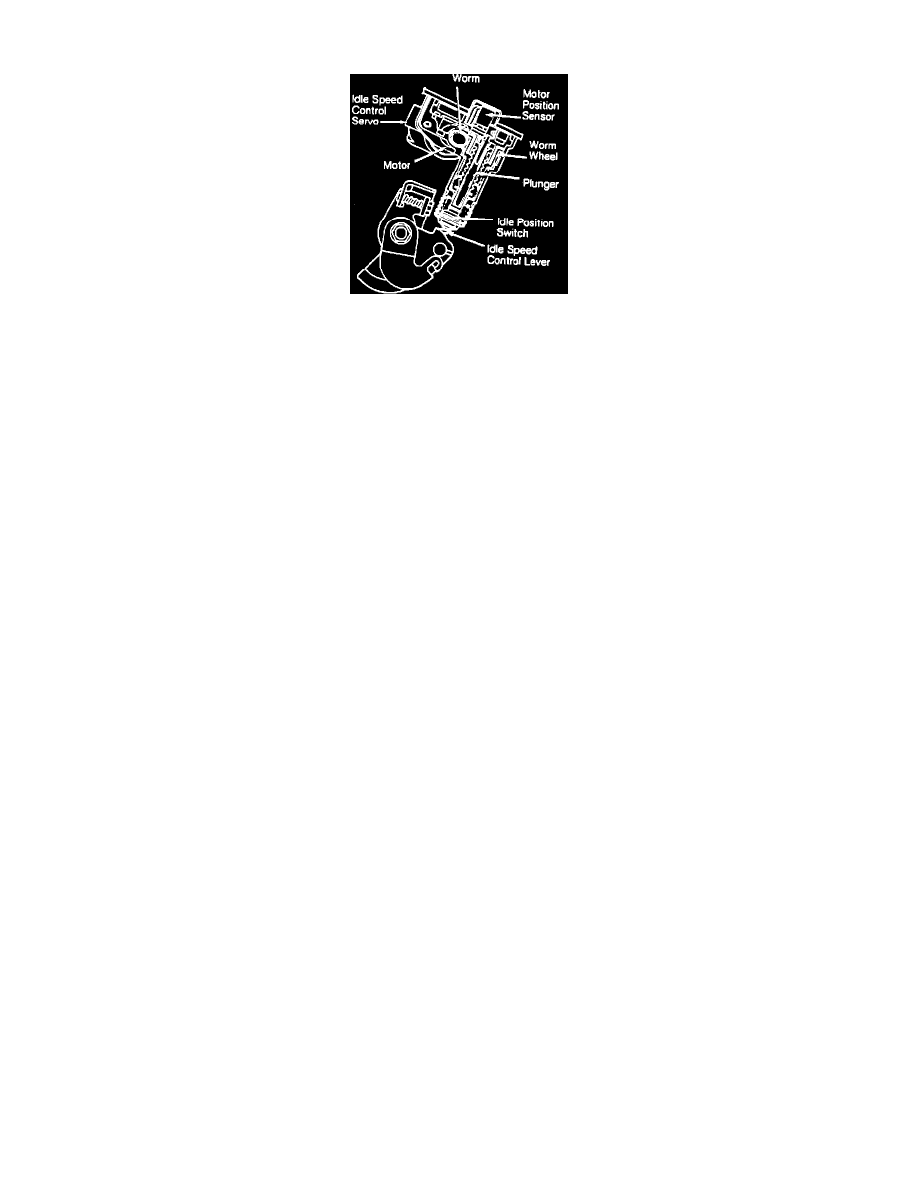Colt Wagon 2WD L4-1468cc 1.5L SOHC (1990)

Idle Speed/Throttle Actuator - Electronic: Description and Operation
ISC & Components
The primary function of the Idle Speed Control (ISC) Servo is to carry out the commands of the Control Unit for regulating the idle speed.
By monitoring several returning sensor signals, the Control Unit is able to determine the operating condition of the engine. Adjustments to the idle speed
via the control servo are made in order to compensate for the air-conditioning compressor load, the load when the automatic transmission is shifted from
PARK or NEUTRAL to DRIVE, and as an idle-up device for cold starting the engine.
The ISC servo consists of a motor, worm gear, worm wheel and plunger. A motor position sensor is used to detect plunger position, and an idle switch is
used to indicate when the engine is at idle. The worm wheel (attached to the motor shaft) is meshed with the worm gear on the plunger. As the motor
rotates, according to the signal from the Control Unit, the plunger extends or retracts. This actuates the throttle valve via the ISC lever. In this way, the
idle speed is controlled by changing the throttle valve opening
